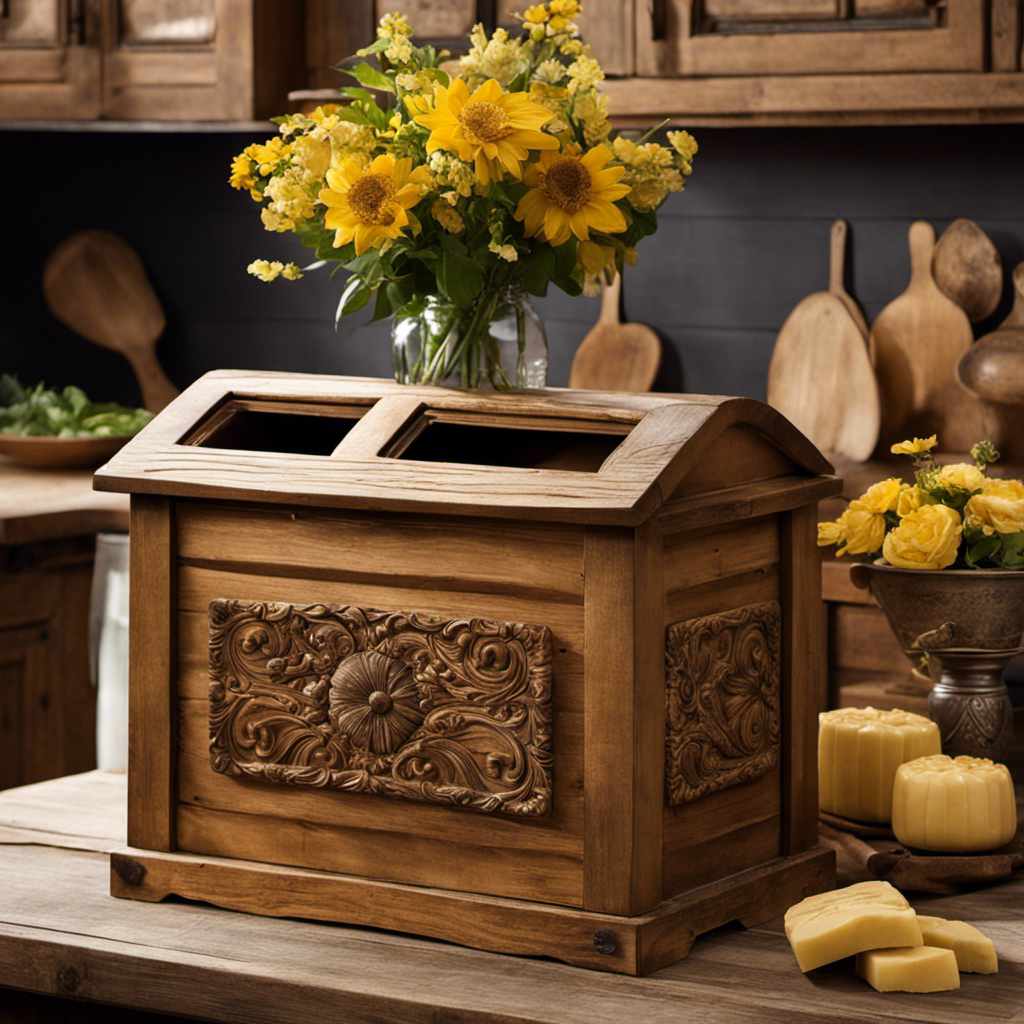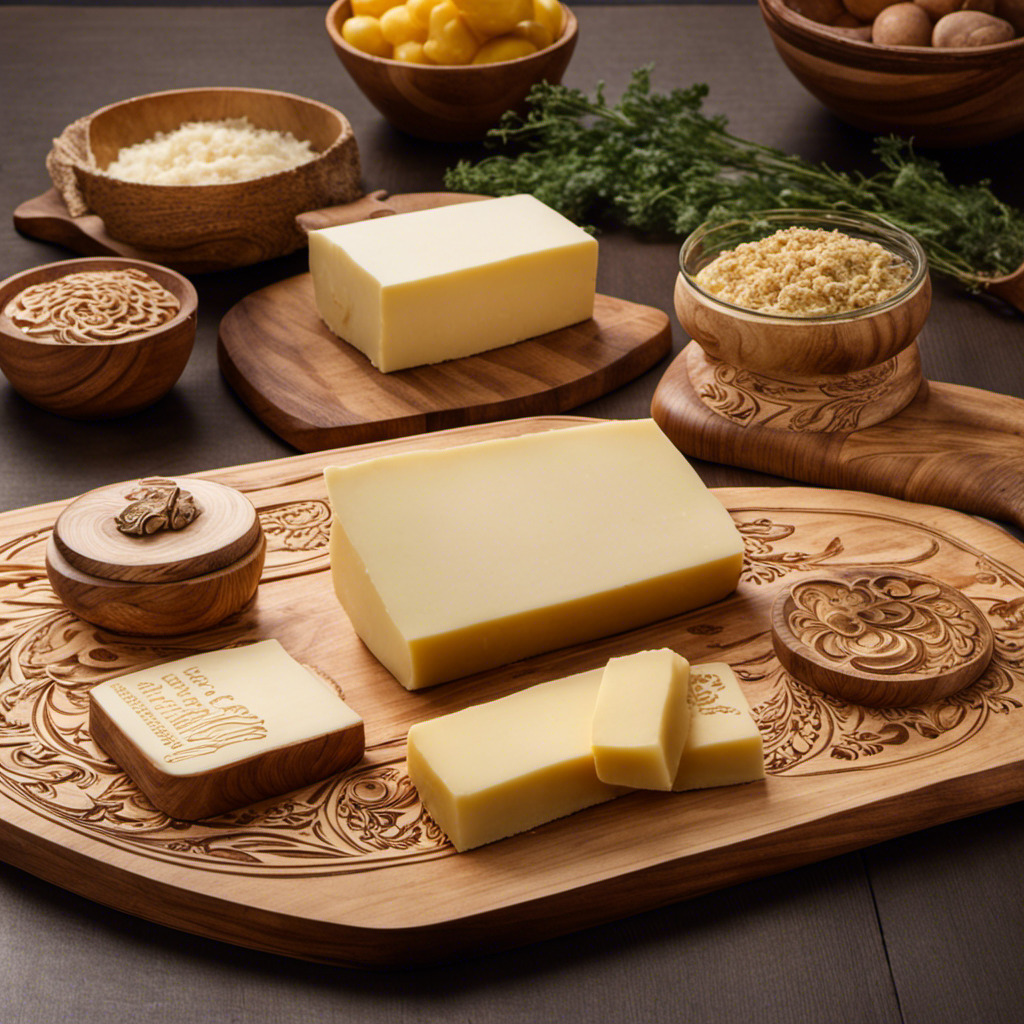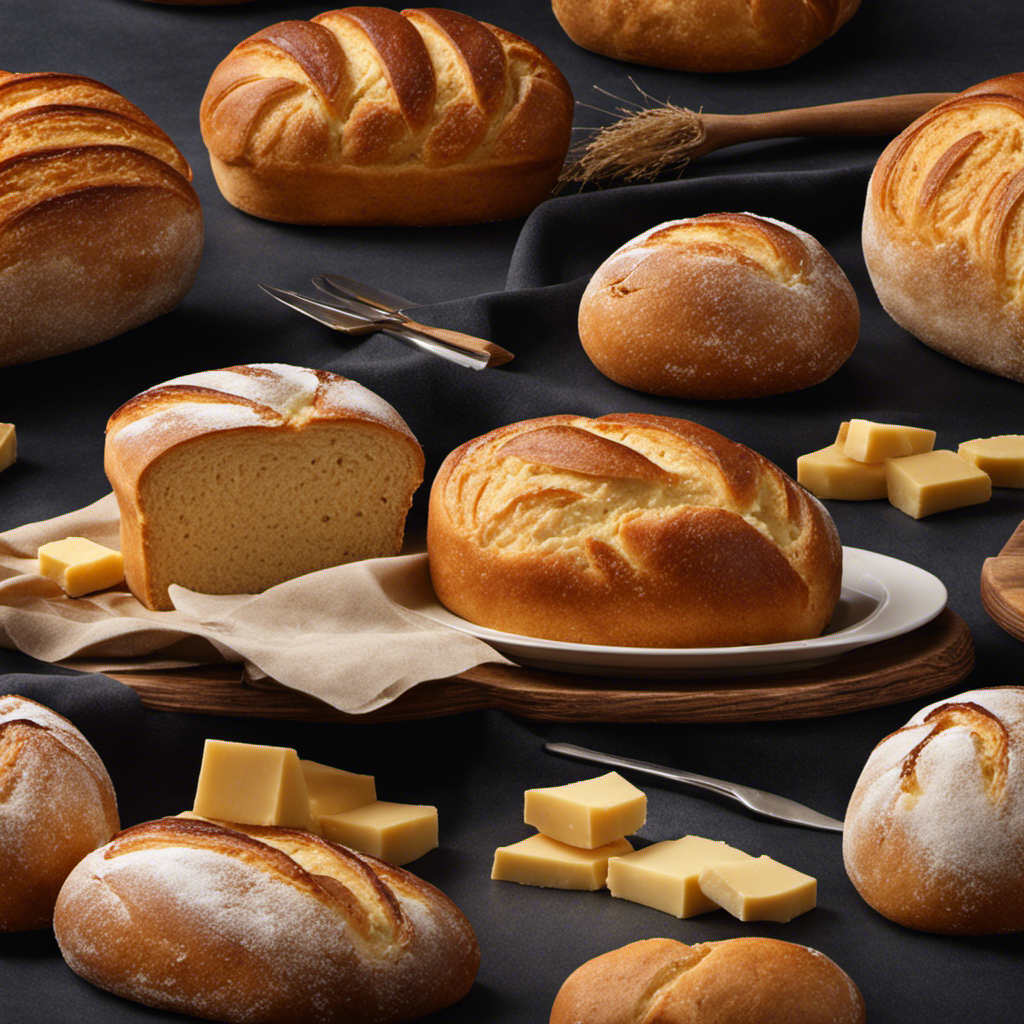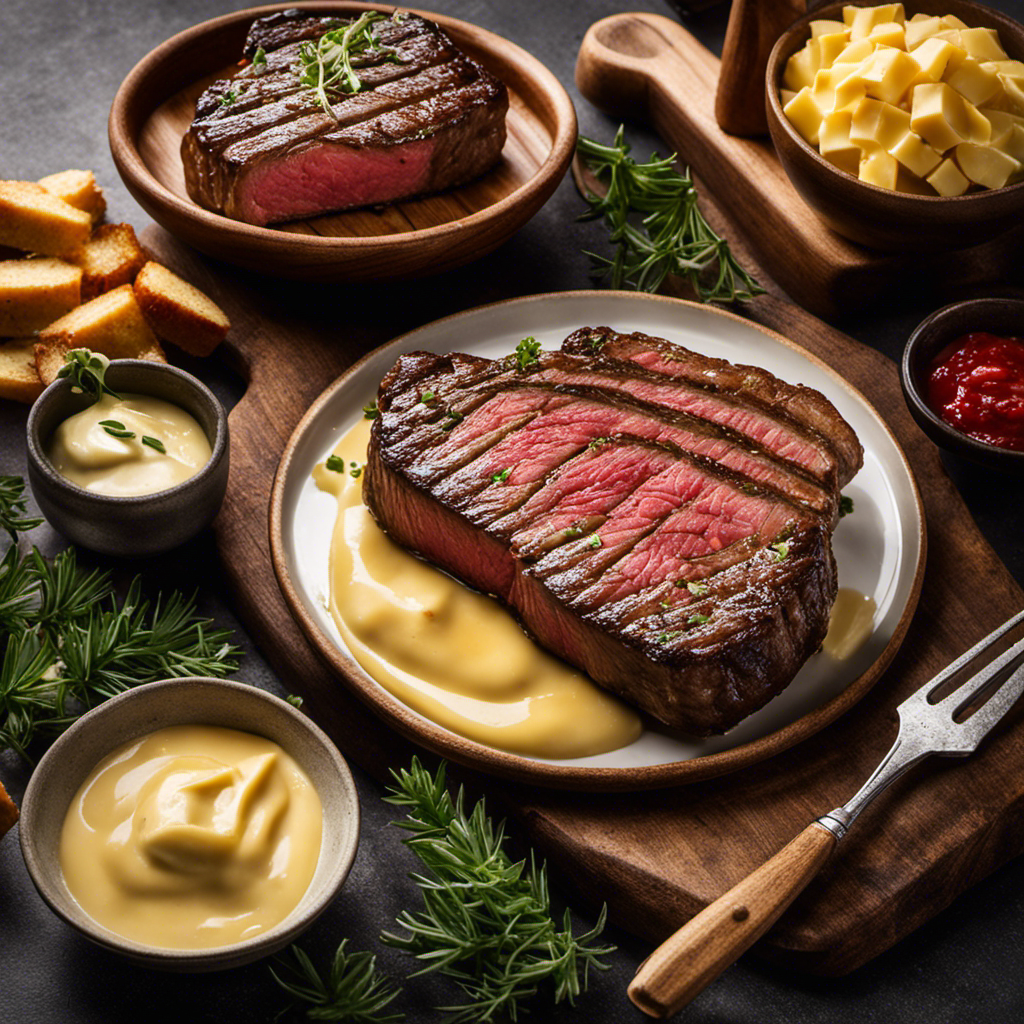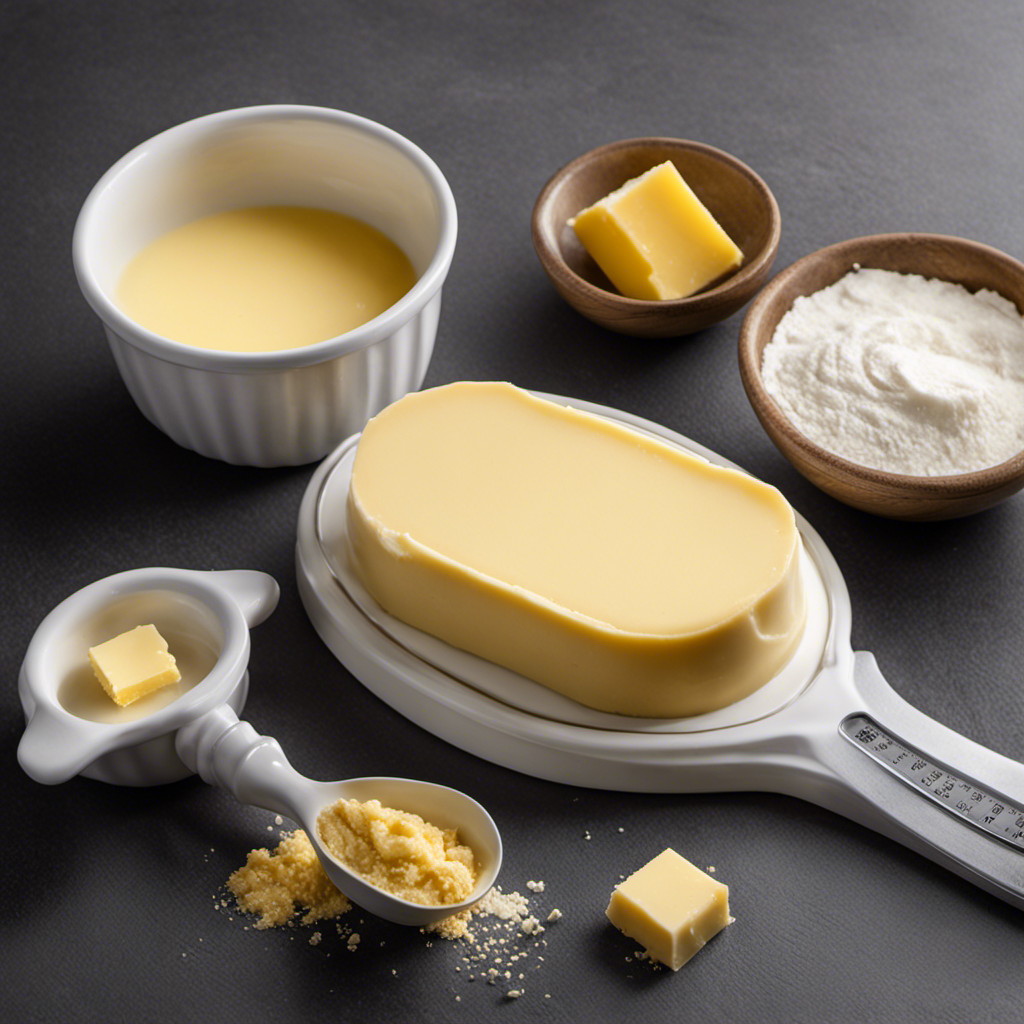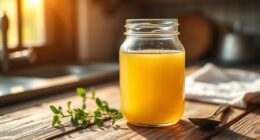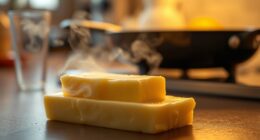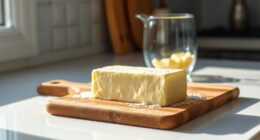Being someone who values history greatly, I often find myself reflecting on the techniques and strategies our ancestors used to create the essentials for everyday living.
One such curiosity that has captured my attention is the process of making butter in the old days. How did they transform milk into that creamy, spreadable delight without modern gadgets?
Join me on a journey through time as we explore the fascinating world of traditional butter making methods and uncover the cultural significance behind this timeless culinary staple.
Key Takeaways
- Traditional butter making involved collecting fresh cream from milk-producing animals like cows, goats, and sheep.
- Cream was allowed to rise to the top after the milk settled, and the cream with higher fat content yielded richer and more flavorful butter.
- Wooden churns were used with a rhythmic up and down motion to turn cream into butter, requiring physical effort but resulting in superior taste and texture.
- Butter making had cultural significance, symbolizing prosperity and tradition, and allowed for the preservation of historical techniques and celebration of cultural heritage.
Historical Background
I’ve always been curious about the historical background of how butter was made in the old days. Traditional farming practices played a crucial role in the evolution of butter making techniques. In ancient times, people relied on milk-producing animals like cows, goats, and sheep. They’d hand-milk these animals and collect the milk in containers made from materials like wood or clay.
Afterward, the milk was left to sit for a while to allow the cream to rise to the top. This cream was then skimmed off and placed in a churn. The churning process involved vigorously shaking or stirring the cream until it separated into butter and buttermilk.
The butter was then washed and shaped into blocks or molded into various shapes. These traditional methods laid the foundation for the butter making techniques we use today.
Traditional Churning Methods
Back then, we’d use a wooden churn and a rhythmic up and down motion to turn cream into delicious butter. Traditional techniques for making butter involved a meticulous process that required patience and skill. The hand churned butter was a staple in many households, providing a rich and creamy addition to meals. The table below highlights the steps involved in the traditional churning method:
| Step | Description |
|---|---|
| 1 | Collect fresh cream from cows |
| 2 | Allow the cream to settle for a few hours to separate the fat |
| 3 | Pour the cream into a wooden churn |
| 4 | Begin churning, using an up and down motion |
| 5 | Continue churning until the cream thickens and separates into butter and buttermilk |
| 6 | Drain the buttermilk and rinse the butter to remove any remaining liquid |
| 7 | Shape the butter into desired forms and store in a cool place |
These traditional techniques required physical effort but resulted in a superior taste and texture that cannot be replicated by modern methods. Hand churned butter was a labor of love, a testament to the craftsmanship and dedication of the past.
Role of Cream Separation
Cream separation plays a crucial role in the process of making homemade butter. In the old days, cream skimming was done to separate the cream from fresh milk. This was typically done by allowing the milk to sit undisturbed in a shallow container, allowing the cream to rise to the top.
Once the cream was separated, it would be collected and used for making butter. The fat content of the cream was an important factor in determining the quality of the butter. Cream with a higher fat content would yield a richer and more flavorful butter. Skilled butter makers would carefully select the cream with the highest fat content to ensure the best results.
This attention to detail and the understanding of the relationship between cream separation and fat content were essential in producing high-quality homemade butter.
Preservation Techniques
To preserve homemade butter, I store it in airtight containers in the refrigerator. However, in the old days, people didn’t have the luxury of refrigeration. They’d to rely on different preservation techniques to keep their butter fresh for longer periods.
One popular method was smokehouse techniques. After churning the butter, it would be hung in a smokehouse for a few hours. The smoke acted as a natural preservative, inhibiting the growth of bacteria and mold.
Another technique used was salt preservation. The butter would be packed into containers and covered with a layer of salt. This salt layer acted as a barrier, preventing spoilage and extending the shelf life of the butter.
These historical preservation methods allowed people to enjoy their homemade butter for longer periods, even without refrigeration.
Cultural Significance
Growing up, my family celebrated our cultural heritage by incorporating homemade butter into traditional dishes. Butter making ceremonies were an integral part of our culture, symbolizing prosperity and abundance.
Here are three fascinating aspects of the cultural significance of butter:
-
Traditional butter making ceremonies: These ceremonies were elaborate and involved specific rituals and customs to ensure a successful churn. The community would gather to celebrate, sing songs, and offer prayers for a bountiful harvest and good fortune.
-
Butter as a symbol of prosperity: In many cultures, butter was seen as a symbol of wealth and prosperity. It represented the abundance of the land and the rewards of hard work. Offering butter to guests or using it in special occasions was a way to showcase one’s success and status.
-
Historical importance: Butter making techniques have been passed down through generations, preserving cultural traditions and knowledge. These ceremonies not only provided a way to make butter but also served as a means of connecting with our ancestors and embracing our cultural heritage.
Incorporating homemade butter into our traditional dishes allowed us to honor our cultural roots and appreciate the historical significance of this age-old practice.
Frequently Asked Questions
What Are the Health Benefits of Consuming Butter Made in the Old Days?
Consuming traditional butter made in the old days provides numerous nutrition benefits. It is rich in essential vitamins and minerals, such as vitamin A and D, and contains healthy fats that support brain function and boost overall health.
How Long Does It Take to Churn Butter Using Traditional Methods?
Using traditional methods, churning butter can take anywhere from 20 minutes to an hour, depending on the temperature and consistency of the cream. The process involves continuous agitation until the fat separates from the buttermilk.
Were There Any Specific Tools or Utensils Used for Churning Butter in the Old Days?
In the old days, specific tools and utensils were used for churning butter. These tools and utensils were designed to efficiently separate the cream from the milk and agitate it until it turned into butter.
How Did People Ensure the Quality and Freshness of Butter Before Modern Preservation Techniques Were Available?
In the old days, people ensured the quality and freshness of butter without modern preservation techniques. They relied on quality assurance methods such as tasting, smelling, and inspecting the texture to determine if the butter was still good to consume.
Did Different Cultures Have Different Methods or Variations in Making Butter in the Old Days?
Different cultures had their own traditional techniques for making butter in the old days. Cultural variations in butter-making methods were influenced by factors such as available resources, climate, and culinary preferences.
Conclusion
In conclusion, the process of making butter in the old days was a labor-intensive and time-consuming task. Through traditional churning methods and the separation of cream, people were able to create this staple food item.
Preservation techniques were also employed to ensure its longevity. The cultural significance of butter can’t be overlooked, as it played a vital role in the diets and culinary traditions of various societies throughout history.
Understanding the historical context and techniques behind butter-making sheds light on the ingenuity and resourcefulness of our ancestors.
